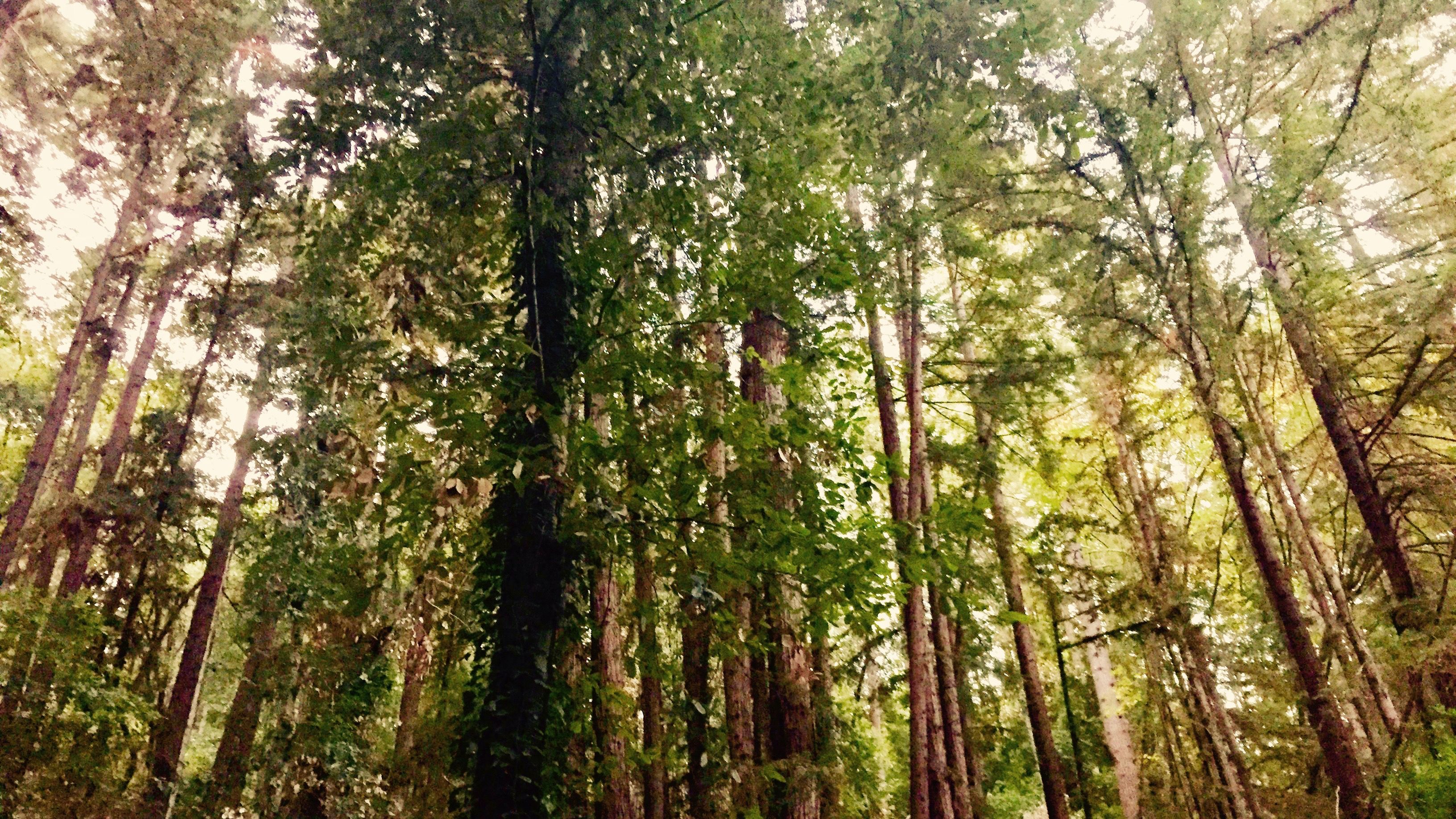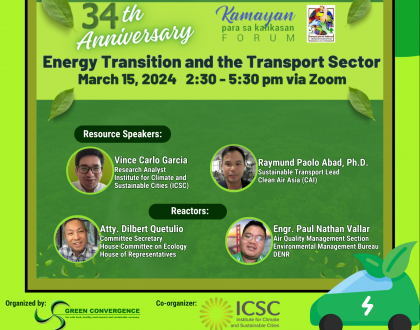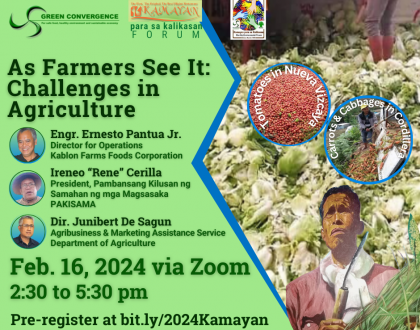Why native trees?

Published February 7, 2018, 10:00 PM, By Flor G. Tarriela via Manila Bulletin
At a recent typhoon that hit Metro Manila on the way to Tagaytay, I noticed many fallen trees, Acacia and Tulip trees. Later I found out these fallen trees were actually “alien” trees and not native to the Philippines.
But wonder of wonders in typhoon Ondoy, a Dita tree stood tall and saved 36 lives in Quezon City! The Dita tree, like most native trees is a survivor tree. I’m happy that a few years back, FINEX together with MNTC Rod Franco had the project of greening NLEX with Dita trees, now fully grown.
What’s with native trees? Native trees adapt naturally to its local surrounding such as the micro-organism in soil, thus more resilient, that they don’t topple easily. Just like us locals, we don’t get upset stomach immediately from drinking local water or eating local food as foreigners do.
Mr. Oscar Lopez, Chairman Emeritus of Lopez Holdings, says that sometime back, the Philippines had 94% cover with forests. In 1945 it was still 66% or 2/3 covered. Where are we today? So sad, the loss of forest cover is so fast that it is less than 7% with only 3% in unspoiled condition.
The Philippines is so blessed; despite our terrain of less than 1% of the world’s land area, we have more than 5% of the world’s flora. “Per hectare, our country probably harbors more species than any other place on earth” says Dr. Angelina Galang of Green Convergence. The Philippines has 3,600 identified native trees, 67% are endemic, meaning found only in the country. However even this biodiversity is being lost at an alarming rate.
Imee Sarmiento of Hortica Filipino Foundation was the guest speaker on Philippine Native Trees at the MAP Agribusiness forum chaired by Ramon Ilusorio, Chairman Emeritus of Multinational Investment. She spoke passionately about our native trees, how beautiful and majestic are the flowering (Bagawak Morado, Butat, Ilang-Ilang, Banaba, Balai Lamok, etc.) and fruiting (Katmon, Pili, Bignay, etc.) trees. Oh! how I love to have them in my garden.
She also talked about the wood trees. We don’t really have Philippine Mahogany. Instead, Imee said that Bagtikan, Lauan, Tangile, Guyo, Yakal, Apitong are what is known as Philippine Mahogany. She says that Mahogany which is alien to the Philippines, may be good for commercial purposes (grow and cut) but to make it a permanent forest, forget it! No insects will thrive such as what happened to the Bohol Mahogany man made forest. The tarsiers didn’t know what hit them. So where have all these trees gone? They are disappearing fast due to over-harvesting, deforestation, replacement by alien species and even carted away to foreign countries.
Mameng Florento, a plant lover and collector bought a beautiful flowering plant during her Europe travel. Not cheap, only to find out what she bought is our very own native Medinilla Magnifica or Kapa Kapa.
What’s also ironic is that Dr. Jaime Galvez Tan, former Secretary of Health told me that there are about 25 species of cinnamon of which 20 are native to the Philippines. A little bit of trivia, in Pigafetta’s journal (Magellan’s chronicler), the galleon full of spices, including cinnamon, were sufficient to pay all of Magellan’s debt of 7 galleon ships. Sri Lanka has only one species and guess who is known for Cinnamon? Have you heard or seen of Cinnamon native to the Philippines? Now I want to collect these cinnamons.
Out of the 3,600 native trees, only about 200 native trees have been documented in Imee’s “work of love,” the PHILIPPINE NATIVE TREES 101 and 202. Volume #3 is coming soon. Even with volume 3, this represents research on only 10% of the Philippines native trees. Still, there’s much to do.
An excellent project is the Dr. Lucio C. Tan Legacy Forest to plant 15 Million trees over six years or 2.5 million seedlings per year primarily to protect our forest and address the problem of global warming. Once mature, the 15 million trees that include a variety of timber like Narra, Batino, Manalis, Ipil, etc. and fruit trees like Lipote, Marang, etc., shall provide multiple benefits both ecological and socio-economic such as carbon sink, raw material supply, wildlife habitat, improved water quality and quantity, improved ecosystems services and livelihood among others. This can be achieved by planting various species of forest and fruit trees. It is a sustainable reforestation. A legacy for future generations.
Federico “Pike” Lopez, Chairman and CEO of Energy Development Corporation (EDC) sent me a book on “BINHI: Tree for the Future”. Binhi connotes potential and growth. EDC in collaboration with the country’s top botanists have rescued and secured 96 of the most threatened and premium tree species (Yakal, Tindalo, Molave, Alupag, etc.) from extinction. What a legacy! Through the Binhi project, it is hoped that more of us will know and appreciate the ecological, economic and cultural value of Philippine native trees to our country.
To see some of these indigenous trees, Ambassador Delia Albert reminded me to visit the Washington Sycip Garden of indigenous trees at the University of the Philippines donated by Zuellig Co. during the UP centennial.
I’m definitely sold to the idea and importance of native trees. My husband Ed and I were guests of renowned eco lodge expert Hitesh Mehta in Florida who introduced us to famous landscapist and book author Raymond Jungles. My surprise is that even across the seas, Raymond advocates and only uses native plants and trees in his landscaping projects. Yes! Native plants and trees are best in its original natural environment. Love your own.
As Imee said “God gave us trees for different locations and environments. Let us honor and respect God’s design for it has wisdom and purpose.”
Let us plant now and let us plant native trees! They are not only beautiful and majestic, they are useful, adapted to our surroundings and survivors!
••••
Ms. Tarriela is Chairman of Philippine National Bank. She was formerly Undersecretary of Finance and the First Filipina Vice President of Citibank N.A. She is a natural farmer and an environmentalist.
ftarriela@yahoo.com
Recommended Posts

Energy Transition and the Transport Sector
March 15, 2024

As Farmers See It: Challenges in Agriculture
February 16, 2024

